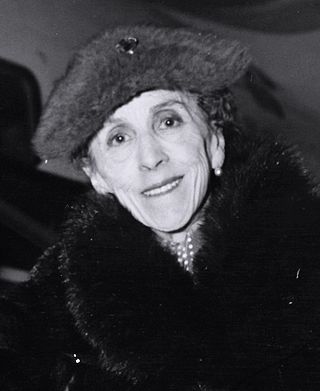
Baroness Karen Christenze von Blixen-Finecke was a Danish author who wrote works in Danish and English. She is also known under her pen names Isak Dinesen, used in English-speaking countries, Tania Blixen, used in German-speaking countries, Osceola, and Pierre Andrézel.
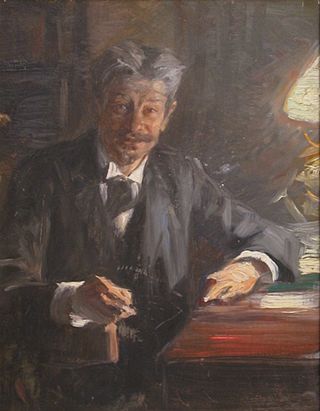
Georg Morris Cohen Brandes was a Danish critic and scholar who greatly influenced Scandinavian and European literature from the 1870s through the turn of the 20th century. He is seen as the theorist behind the "Modern Breakthrough" of Scandinavian culture. At the age of 30, Brandes formulated the principles of a new realism and naturalism, condemning hyper-aesthetic writing and also fantasy in literature. His literary goals were shared by some other authors, among them the Norwegian "realist" playwright Henrik Ibsen.

Niels Thomasius Neergaard was a Danish historian and political figure, a member of the Liberal Moderate Venstre and since 1910 of Venstre. He served as Council President of Denmark between 1908 and 1909 and as Prime Minister of Denmark and Finance Minister from 1920 to 1924. He was also minister of defence from 1908 to 1909, and finance minister on three more occasions: August to October 1909, 1910 to 1913 and 1926 to 1929.
Tom Kristensen, was a Danish poet, novelist, literary critic and journalist.
The Modern Breakthrough is the common name of the strong movement of naturalism and debating literature of Scandinavia which replaced romanticism near the end of the 19th century.

Danish literature a subset of Scandinavian literature, stretches back to the Middle Ages. The earliest preserved texts from Denmark are runic inscriptions on memorial stones and other objects, some of which contain short poems in alliterative verse. In the late 12th century Saxo Grammaticus wrote Gesta Danorum. During the 16th century, the Lutheran Reformation came to Denmark. During this era, Christiern Pedersen translated the New Testament into Danish and Thomas Kingo composed hymns. Fine poetry was created in the early 17th century by Anders Arrebo (1587–1637). The challenges faced during Denmark's absolute monarchy in 1660 are chronicled in Jammersminde by Leonora Christina of the Blue Tower. Ludvig Holberg (1684–1754), influenced by the ideas of the Enlightenment and Humanism, is considered the founder of modern Danish and Norwegian literature. Neoclassical poetry, drama, and the essay flourished during the 18th century influenced by French and English trends. German influence is seen in the verse of the leading poets of the late 18th century such as Johannes Ewald and Jens Baggesen. Other 18th century writers include the hymn writer Hans Adolph Brorson and the satirical poet Johan Herman Wessel.
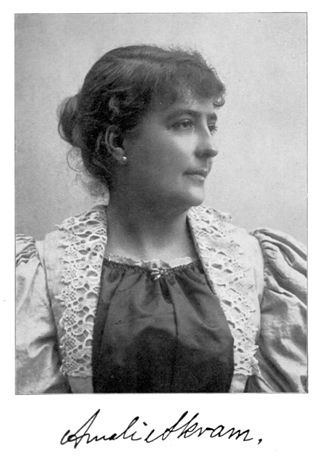
Amalie Skram was a Norwegian author and feminist who gave voice to a woman's point of view with her naturalist writing. In Norway, she is frequently considered the most important female writer of the Modern Breakthrough. Her more notable works include a tetralogy, Hellemyrsfolket (1887–98) which portray relations within a family over four generations.
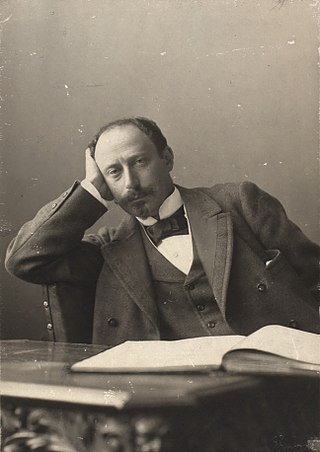
Carl Edvard Cohen Brandes was a Danish politician, critic and author, and the younger brother of Georg Brandes and Ernst Brandes. He had a Ph.D. in eastern philology.

Ernst Immanuel Cohen Brandes was a Danish economist, writer, and newspaper editor best known for editing the Kjøbenhavns Børs-Tidende, which published articles written by leading Danish men of letters, including future Nobel Prize winner Henrik Pontoppidan, during a period later hailed as the Modern Breakthrough in Danish literature.

Carl Johan Wilhelm Madsen, commonly known as Karl Madsen, was a Danish painter and art historian with close connections to the Skagen Painters.

Jens Johannes Jørgensen was a Danish writer, best known for his biographies of Catholic saints. He was nominated for the Nobel Prize in Literature five times.

Viggo Henrik Fog Stuckenberg was a Danish poet notable for his lyrical and emotional poems. His work varied from faithful representation of nature in his early career to Expressionism and Realism. He befriended Sophus Claussen, Johannes Jørgensen and J. P. Jacobsen.

Harald Slott-Møller was a Danish painter and ceramist. Together with his wife, the painter Agnes Slott-Møller, he was a founding member of Den Frie Udstilling.
Hvedekorn is a Danish language literary magazine published in Copenhagen, Denmark, since 1920. It is one of the Danish publications which improved the cultural journalism in the country.
Vindrosen was a Danish modernist cultural and literary magazine existed between 1954 and 1974. It was one of the Danish publications which improved the cultural journalism in the country.
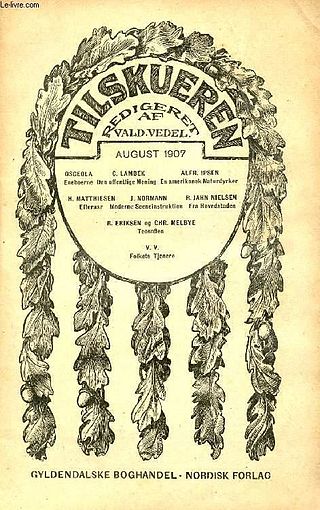
"Eneboerne" is one of the early short stories by the Danish author Karen Blixen. It was published in the journal Tilskueren in August 1907 under the pen name Osceola, a famous early 19th-century Native American leader. It tells the story of Lucie and Eugène, a young couple who go to a deserted island where Eugène can better apply himself to writing a book. Increasingly isolated, Lucie is drawn into a world of dreams and the forces of nature. The ghost of a deceased army officer convinces her that her place is not on the island. Ultimately, overcome by the eternal forces of the sea, the sky and the earth, she is tempted into the ocean where she drowns.

"Familien de Cats" was the third short story written by the Danish writer Karen Blixen under the pen name Osceola, a famous early 19th-century Native American leader. Published in the literary journal Tilskueren in January 1909, it followed "Eneboerne" and "Pløjeren", both published in 1907. It tells the story of a law-abiding family which in each generation has a black sheep who turns out to be its secret blessing. Although Blixen, then Karen Dinesen, wrote hundreds of pages of poems, essays and stories in her youth, it was only when she was 22 that she began to publish some of her short stories in literary journals as Osceola which had also been the name of her father's dog. Like her other early short stories, at the time it failed to attract attention.
Taarnet was a monthly art and literary magazine founded and edited by Johannes Jørgensen in Copenhagen, Denmark. It was subtitled as Illustreret Tidsskrift for Kunst og Litteratur. The magazine was one of the early avant-garde publications and the major representative of symbolism in Denmark. It existed for one year between 1893 and 1894.
Den danske Spectator was one of the earliest magazines published in Danish language. The magazine which existed between 1744 and 1745 was established by Jørgen Riis. The headquarters of the weekly magazine was in Copenhagen. It was a literary review, but it frequently contained writings on censorship, freedom of speech and motivations to write.













